Cloud Computing Security: Comprehensive Risk Analysis & Strategies
VerifiedAdded on 2023/06/11
|8
|1067
|140
Report
AI Summary
This report provides a comprehensive overview of cloud computing security, focusing on the security issues, risks, and risk management strategies associated with adopting cloud technology in an enterprise. It highlights the advantages of cloud computing, such as cost savings through pay-per-demand IT infrastructure, while also addressing the challenges, including data protection, loss of governance rights, and the complexities of migrating between cloud vendors. The report emphasizes the importance of enterprises acknowledging risk factors and implementing well-planned cloud strategies, including customized approaches to align with workload and business objectives. Furthermore, it discusses the need for collaboration between business units and cloud vendors to identify potential outcomes and integrate cloud technology effectively within both private and public environments, ultimately aiming to bridge the gap through diligent partner selection and successful strategy implementation. Desklib offers a platform to explore similar solved assignments and past papers.
1 out of 8
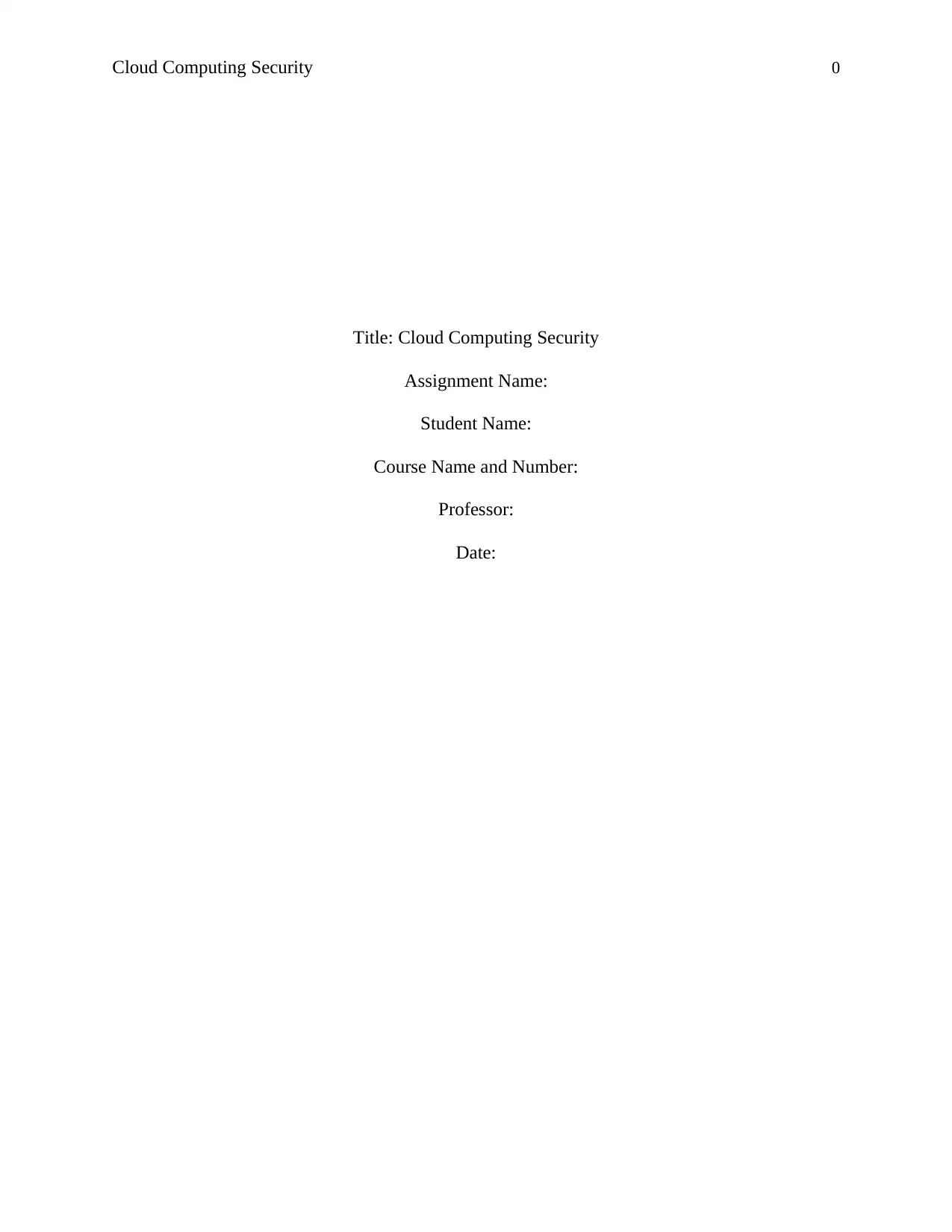
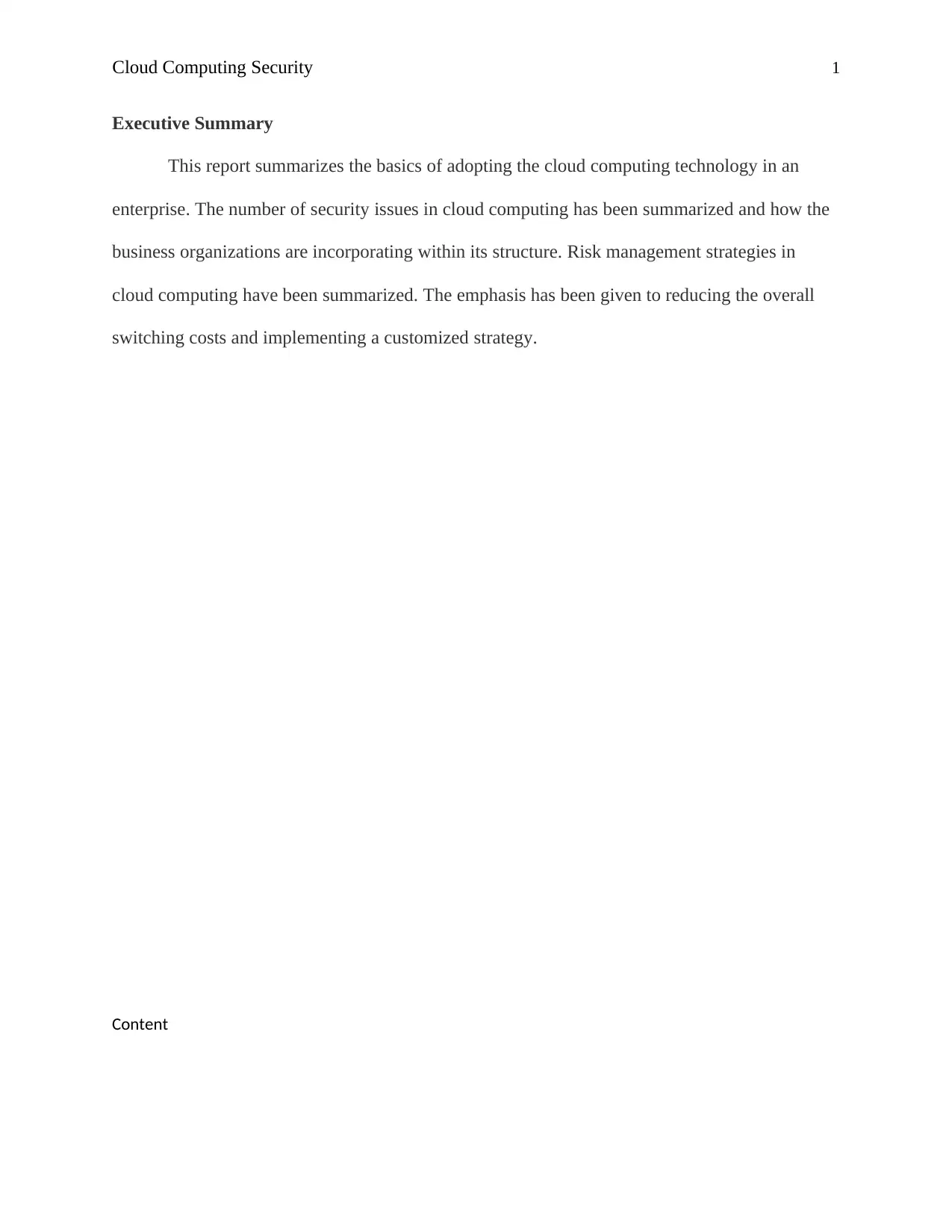
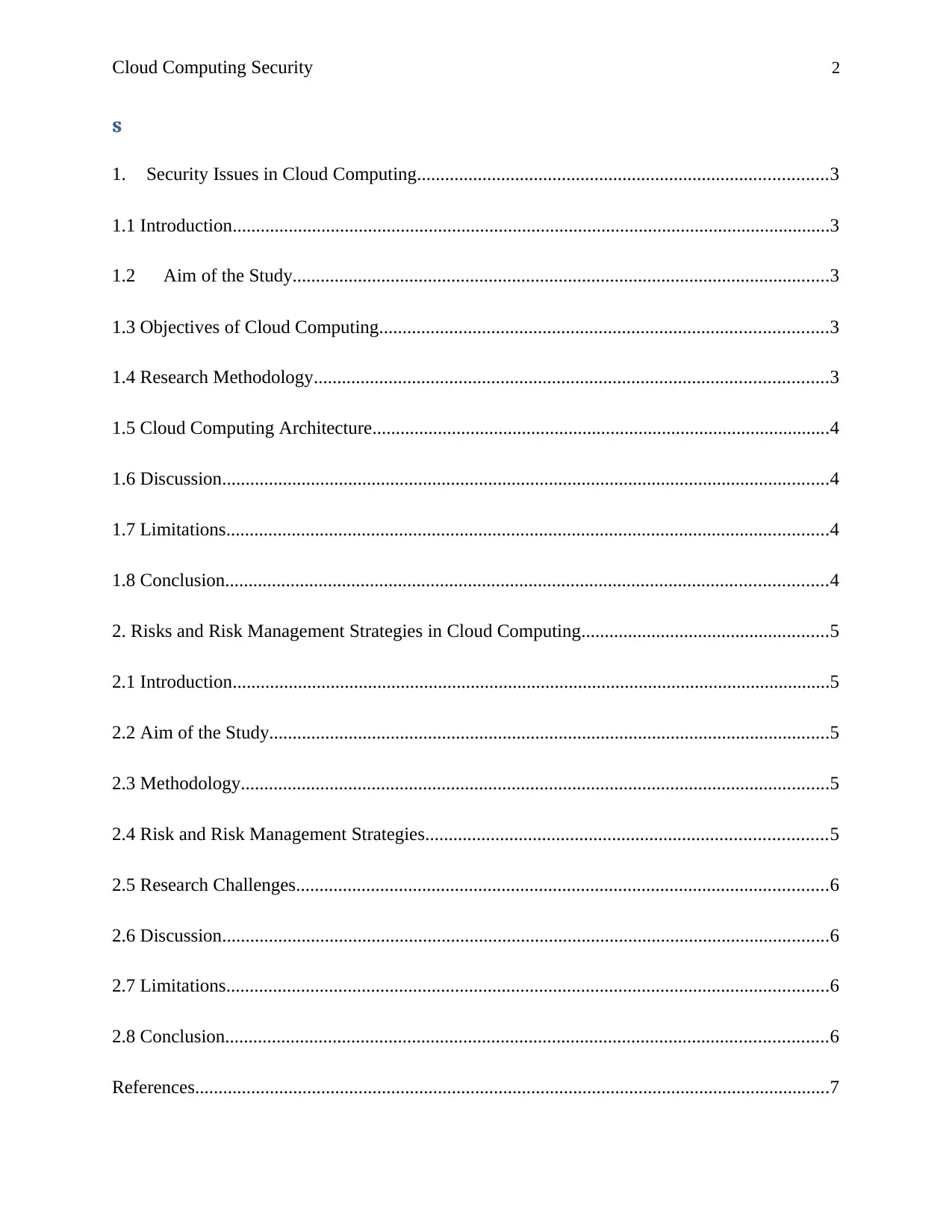
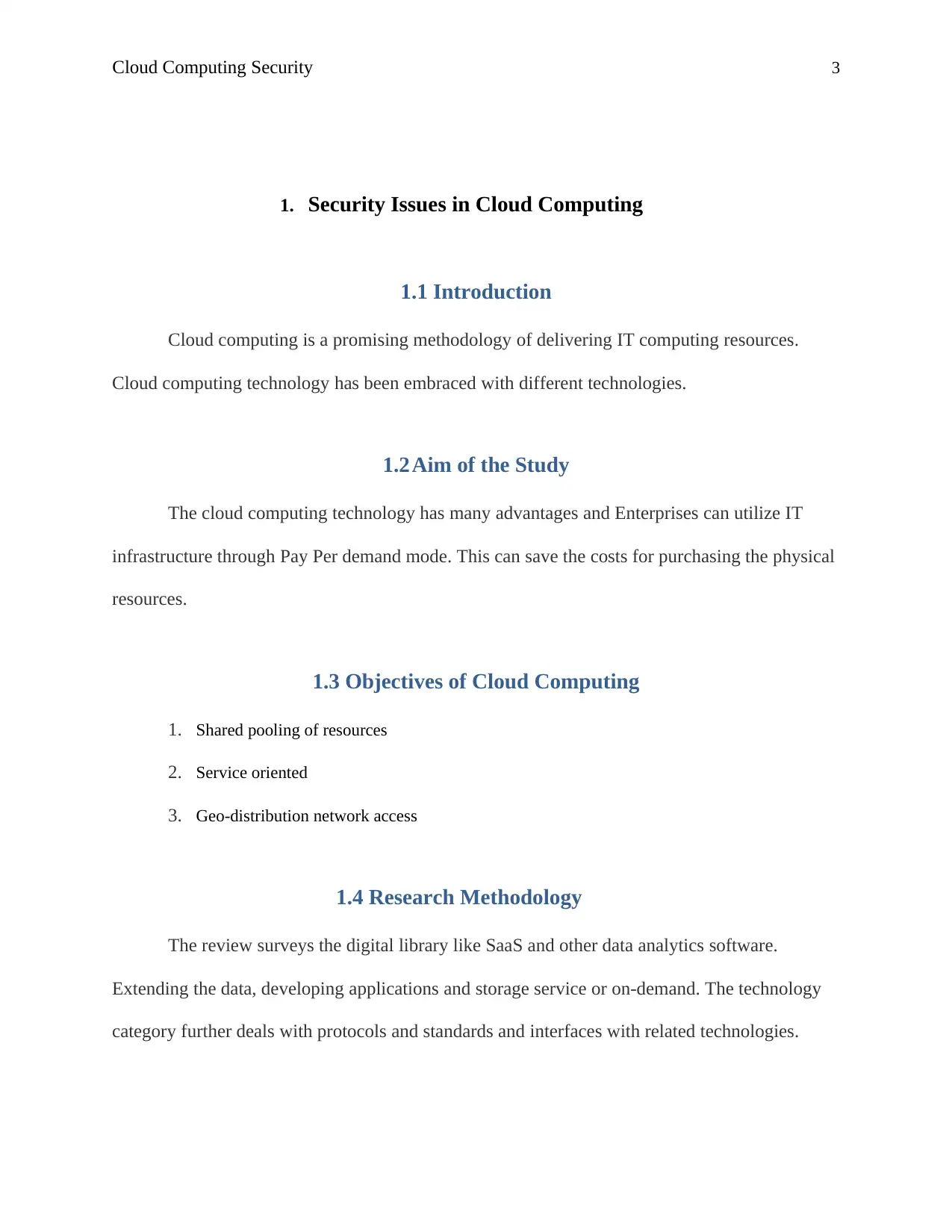
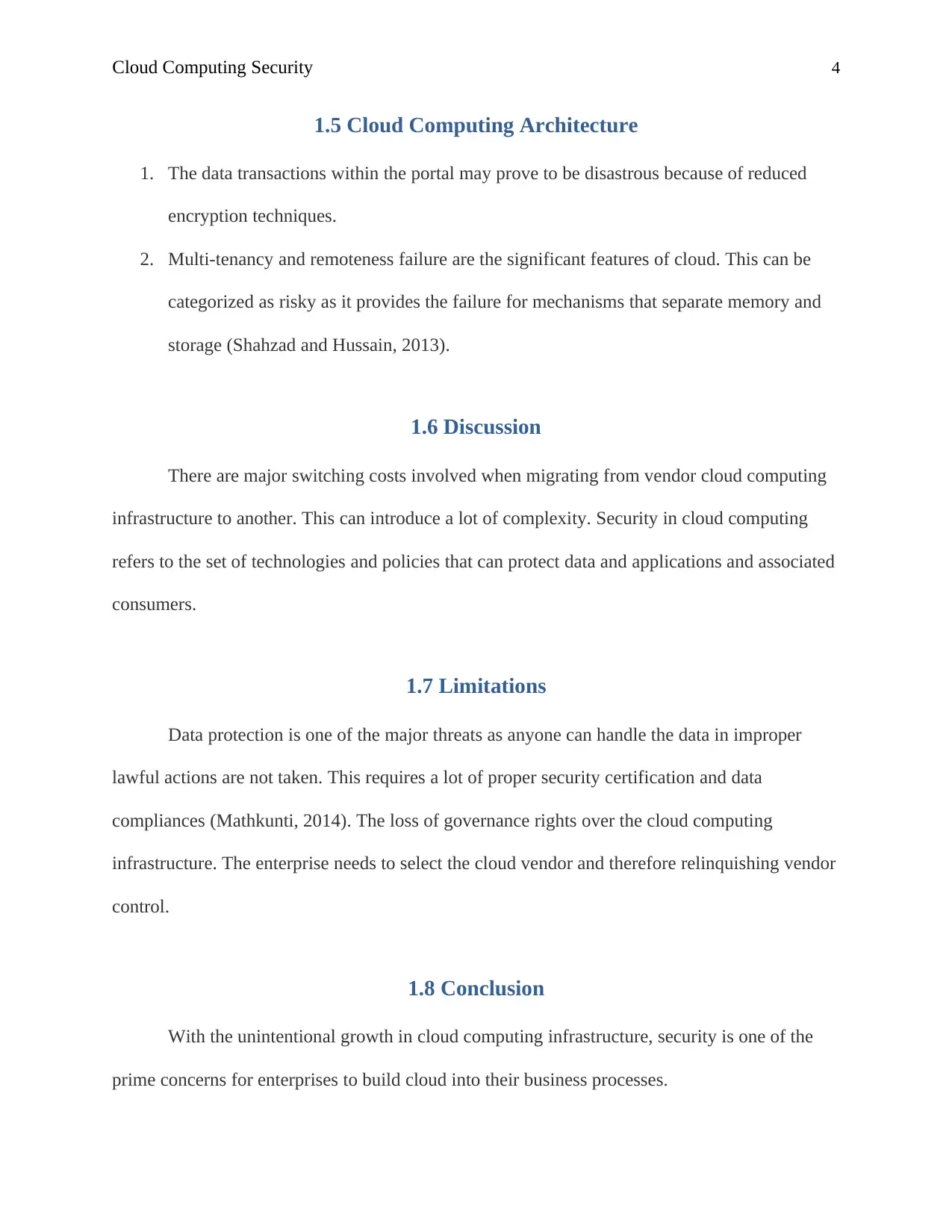

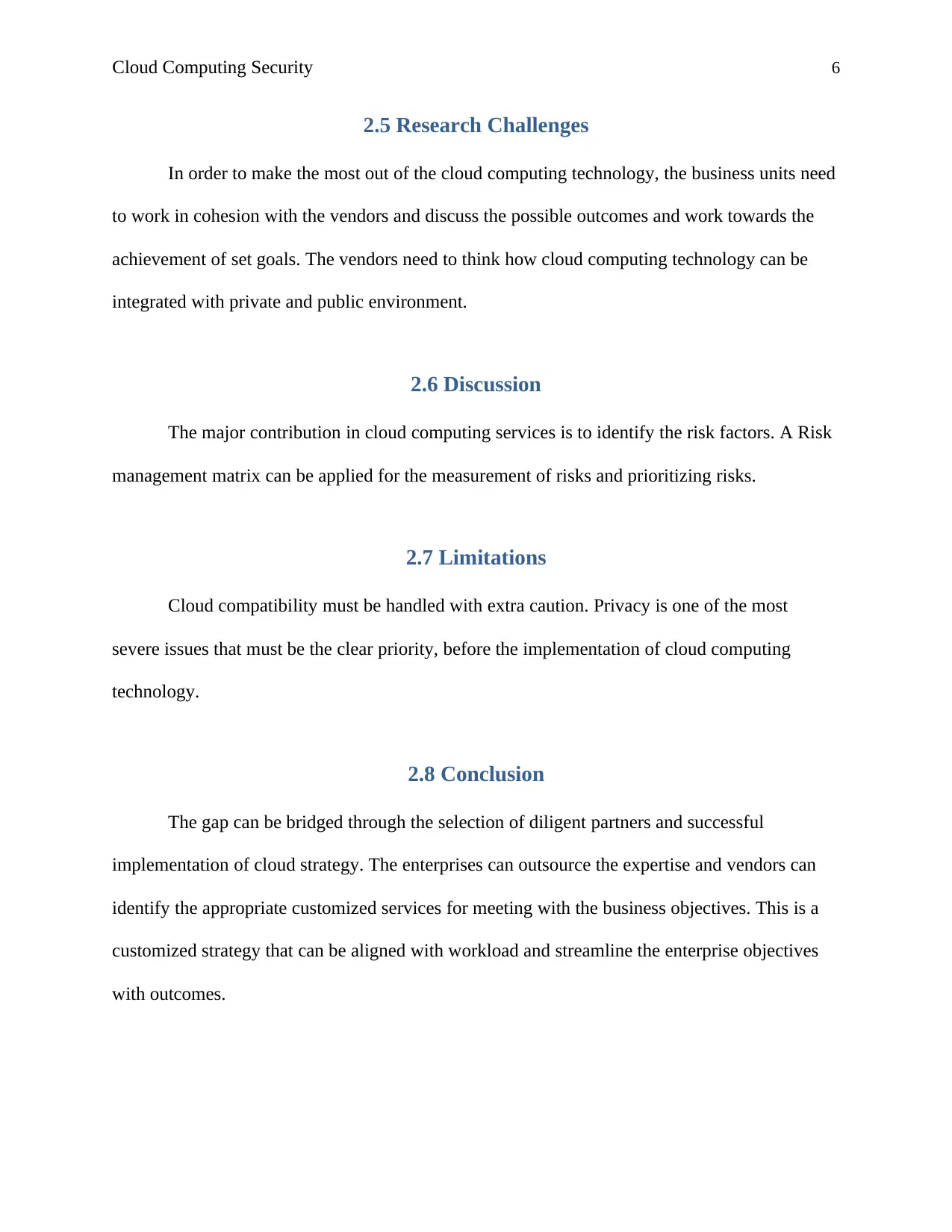
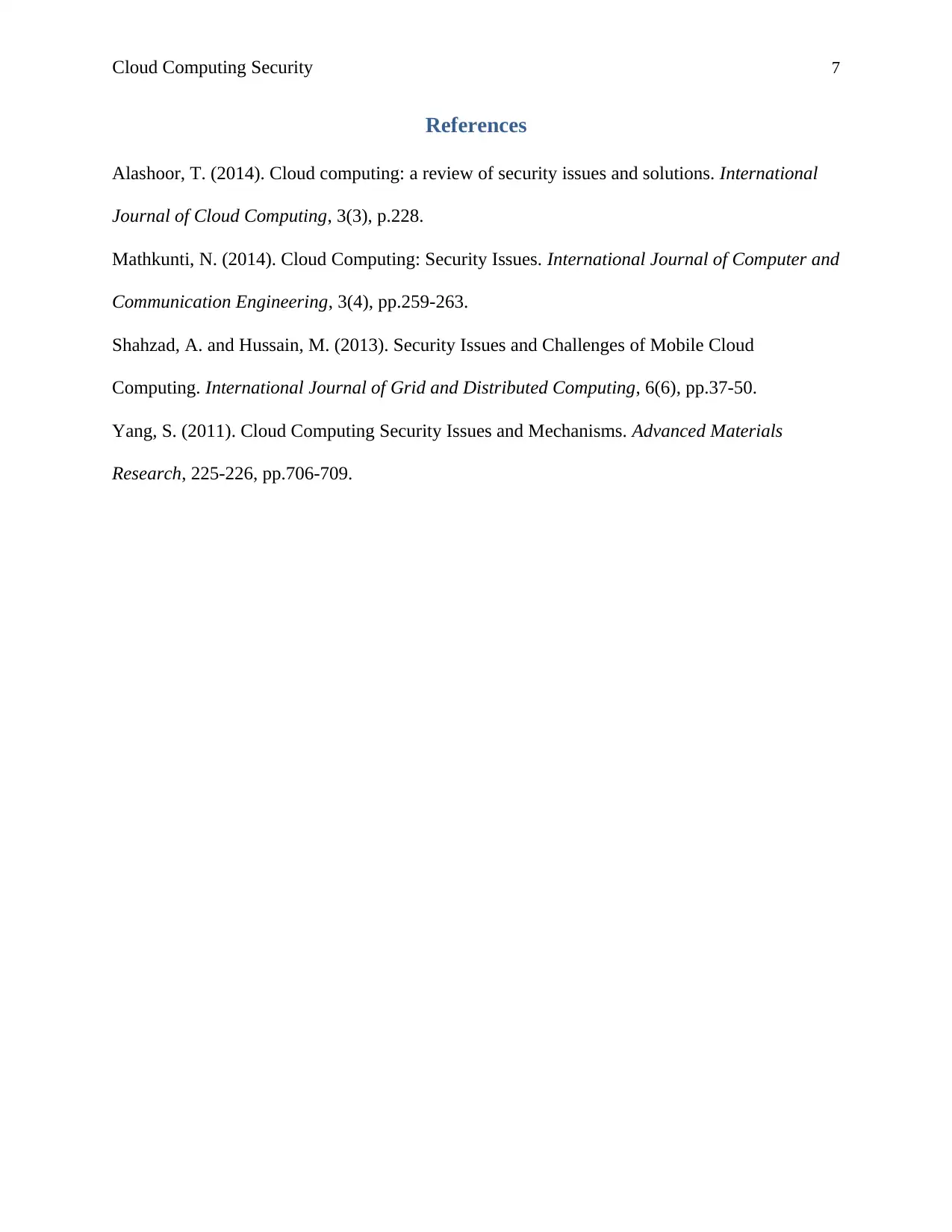





![[object Object]](/_next/static/media/star-bottom.7253800d.svg)